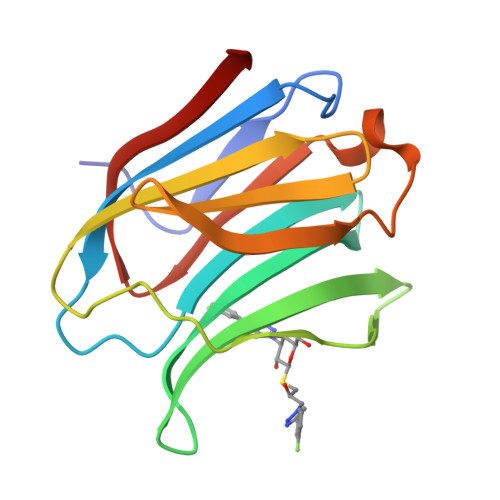Are crystallographic B-factors suitable for calculating protein conformational entropy?
Caldararu, O., Kumar, R., Oksanen, E., Logan, D.T., Ryde, U.(2019) Phys Chem Chem Phys 21: 18149-18160
- PubMed: 31389436
- DOI: https://doi.org/10.1039/c9cp02504a
- Primary Citation of Related Structures:
6RHL, 6RHM - PubMed Abstract:
Conformational entropies are of great interest when studying the binding of small ligands to proteins or the interaction of proteins. Unfortunately, there are no experimental methods available to measure conformational entropies of all groups in a protein. Instead, they are normally estimated from molecular dynamics (MD) simulations, although such methods show problems with convergence and correlation of motions, and depend on the accuracy of the underlying potential-energy function. Crystallographic atomic displacement parameters (also known as B-factors) are available in all crystal structures and contain information about the atomic fluctuations, which can be converted to entropies. We have studied whether B-factors can be employed to extract conformational entropies for proteins by comparing such entropies to those measured by NMR relaxation experiments or obtained from MD simulations in solution or in the crystal. Unfortunately, our results show that B-factor entropies are unreliable, because they include the movement and rotation of the entire protein, they exclude correlation of the movements and they include contributions other than the fluctuations, e.g. static disorder, as well as errors in the model and the scattering factors. We have tried to reduce the first problem by employing translation-libration-screw refinement, the second by employing a description of the correlated movement from MD simulations, and the third by studying only the change in entropy when a pair of ligands binds to the same protein, thoroughly re-refining the structures in exactly the same way and using the same set of alternative conformations. However, the experimental B-factors seem to be incompatible with fluctuations from MD simulations and the precision is too poor to give any reliable entropies.
Organizational Affiliation:
Department of Theoretical Chemistry, Lund University, Chemical Centre, P. O. Box 124, SE-221 00 Lund, Sweden. Ulf.Ryde@teokem.lu.se.

















